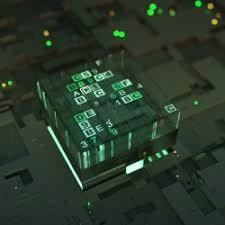The rapid growth of digital services, data centers have become the backbone of modern technology. However, these facilities consume massive amounts of energy, contributing significantly to global carbon emissions. To address this issue, green tech innovations are revolutionizing data centers, making them more energy-efficient and environmentally friendly. This blog explores how green technologies are transforming data centers, their benefits, and the future of sustainable data management.
What Are Green Tech Innovations in Data Centers?
Green tech innovations refer to technologies and practices that reduce the environmental impact of data centers. These innovations focus on energy efficiency, renewable energy usage, and sustainable infrastructure. By integrating green technologies, data centers can lower their carbon footprint while maintaining high performance and reliability.
Key Green Tech Innovations Transforming Data Centers
➢ Renewable Energy Integration
- Data centers are increasingly powered by renewable energy sources such as solar, wind, and hydroelectric power.
- Example: Google and Microsoft have committed to running their data centers on 100% renewable energy.
- Benefit: Reduces reliance on fossil fuels and minimizes greenhouse gas emissions.
➢ Energy-Efficient Cooling Systems
- Traditional cooling systems consume significant energy. Modern innovations like liquid cooling and free air cooling drastically reduce energy consumption.
- Example: Facebook's data center in Sweden uses naturally cool air to maintain temperatures, cutting energy use.
- Benefit: Lowers electricity consumption and operational costs.
➢ Modular Data Centers
- Modular data centers are pre-fabricated units that optimize space and energy efficiency.
- Example: Dell's modular data centers offer scalable and energy-efficient solutions.
- Benefit: Reduces construction time and improves energy utilization
➢ AI-Powered Energy Management
- Artificial Intelligence (AI) systems monitor and optimize energy usage in real-time.
- Example: Google's DeepMind AI reduced energy usage in its data centers by 40%.
- Benefit: Enhances efficiency and reduces operational costs.
➢ Energy Storage Solutions
- Data centers are adopting energy storage systems like lithium-ion batteries and fuel cells to store renewable energy.
- Example: Microsoft uses hydrogen fuel cells to power its data centers during outages.
- Benefit: Provides backup power and enhances energy efficiency.
Why Green Tech Innovations Matter
Adopting green tech innovations in data centers is crucial for building a sustainable future. These technologies not only reduce environmental impact but also offer economic
benefits such as lower energy bills and operational costs. Furthermore, companies that prioritize sustainability can enhance their reputation and meet regulatory requirements.
Best Practices for Implementing Green Tech in Data Centers
➢ Conduct Energy Audits
- Assess current energy usage to identify areas for improvement.
➢ Invest in Renewable Energy
- Partner with renewable energy providers to power data centers.
➢ Adopt AI and Automation
- Use AI tools to monitor and optimize energy consumption.
➢ Upgrade Infrastructure
- Replace outdated hardware with energy-efficient equipment.
➢Implement Cooling Innovations
- Use liquid cooling and free air cooling systems to reduce energy usage.
The Future of Green Data Centers
As climate change concerns grow, the demand for green data centers will continue to rise. Emerging technologies like Quantum Computing, Edge Computing, and Biodegradable Hardware will further enhance sustainability. Collaboration between governments, businesses, and tech companies will be essential to drive innovation and set environmental standards.
Conclusion
Green tech innovations are paving the way for a more sustainable future in data centers. By adopting renewable energy, energy-efficient cooling systems, and AI-powered energy management, data centers can significantly reduce their environmental impact. The journey towards greener data centers requires collective efforts from businesses, policymakers, and consumers to create a cleaner and more energy-efficient digital infrastructure.
Author Bios
1. Mrs.P.Valarmathi, AP/CSE
2. Mr.R.Premkumar, AP/CSE
3. Naveeth R P, II yr/’B’ - CSE
4. Namitha D, II yr/’B’ - CSE



Comments
Post a Comment